Banding in your own backyard (literally) has some great advantages, but one of the things I seem to be missing is all the baked goods arriving at the other banding sites!
Last week was a great week for my site, lots of birds passing through until Sunday May 15th and then everything kind of stopped until it picked back up a bit this morning. In conversation with Rick, we’ve been reflecting on the importance of even small patches of hedgerows to migrating birds. We have rows of cedar hedges lining our property and they shelter a wide variety of birds, including a Canada Warbler that flew into it on Sunday. Not bad for a backyard bird! Add to that the Lincoln’s Sparrow in the same net from earlier this week and that’s pretty impressive for a backyard. My other nets down the road are in pretty open areas, one in front of a hedgerow and the other slipped in between 2 hedgerows. All three nets have caught an impressive 30 species in 9 days! With development coming at this area from both Mount Hope and Caledonia, these small spaces become even more important for both migrating and nesting species. The family who own the property I use are looking at building a house in this area next year, but have been so impressed with the diversity of birds in the hedgerows they have decided to leave up the one set of hedgerows in order to hopefully continue providing habitat for the birds.

Net to the left in front of the hedgerows. The box has a Tree Swallow nest and they enjoy sitting sentry on the pole closest to their nest.
In preparation for the Global Big Day, I read a book with my class called, “Is this Panama?”. It tells the story of a hatch year Wilson’s Warbler and his first journey south. It was a great story, full of information about other birds as well. At the back of the book it shows a map of the route “Sammy”, the Wilson’s Warbler, took from Alaska. Instead of going straight down the Pacific Coast to Panama, he headed across northern Canada, down through the Great Lakes area and south through the States. We discussed how he had taken the “long way” and students thought he would do better to head back in the spring taking the shorter route. Well, wouldn’t you know it, but I opened my net the next morning and in one of the nets was a Wilson’s Warbler! The students were delighted to see photos of him and one even realized “He took the long way back!”
Banded 93 (May 10th – May 19th)
I open for about 2 hours each morning 5:30am-7:30am) except for Saturdays when I open for the full morning.
2 Canada’s Warbler
1 House Finch
1 Lincoln’s Sparrow
13 Gray Catbirds
11 Baltimore Oriole’s
1 Red-Winged Blackbird
2 Downy Woodpeckers
3 Orchard Orioles
1 Song Sparrow
3 Eastern White-crowned Sparrows
1 White-throated Sparrow
1 Swainson’s Thrush
1 Northern Flicker
1 Tennesse Warbler
21 American Goldfinches
2 Least Flycatchers
8 Common Yellow Throats
1 Wilson’s Warbler
2 Traill’s Flycatcher
4 Yellow Warblers
5 Chipping Sparrows
6 House Wrens
1 Myrtle Warbler
1 Mourning Warbler
And an extracted Ruby-throated Hummingbird (too bad Nancy didn’t live closer!)
Recaps: 22
3 Tree Swallows
3 Song Sparrows
5 American Goldfinches
2 Gray Catbirds
1 Eastern Bluebird
1 Northern Cardinal
3 Black-capped Chickadees
1 Brown-headed Cowbird
1 Yellow Warbler
1 Common Yellow Throat
1 Downy Woodpecker
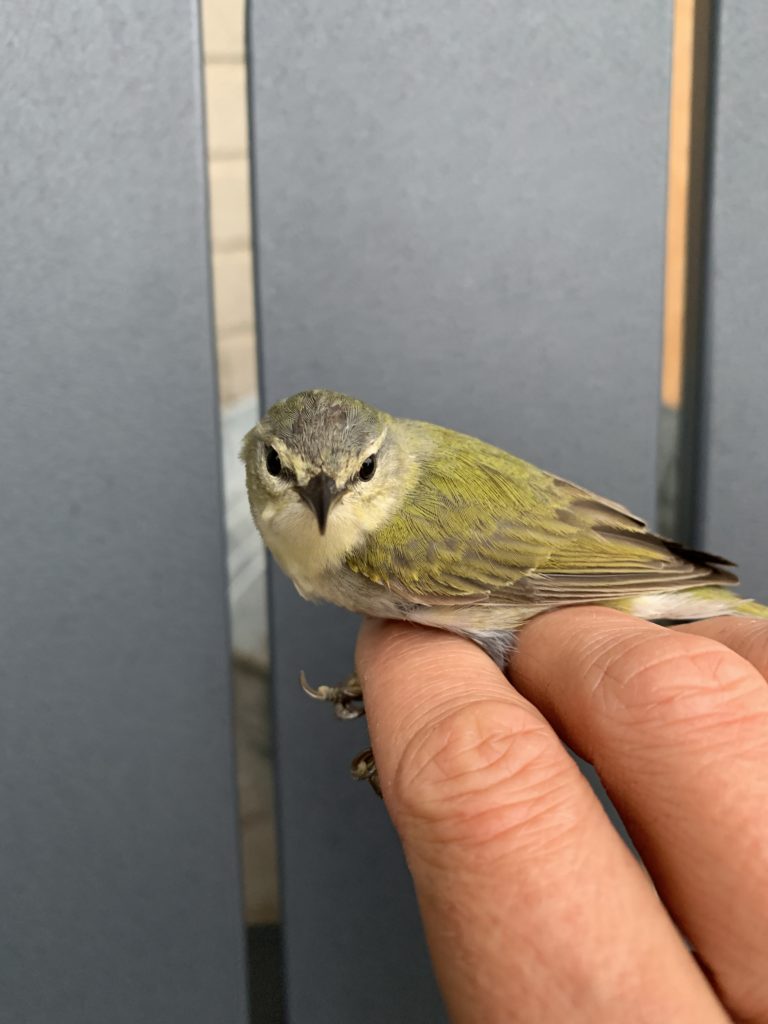
Tennessee Warbler – I have been hearing them around both properties for a couple of days, so was delighted to finally get one in a net!
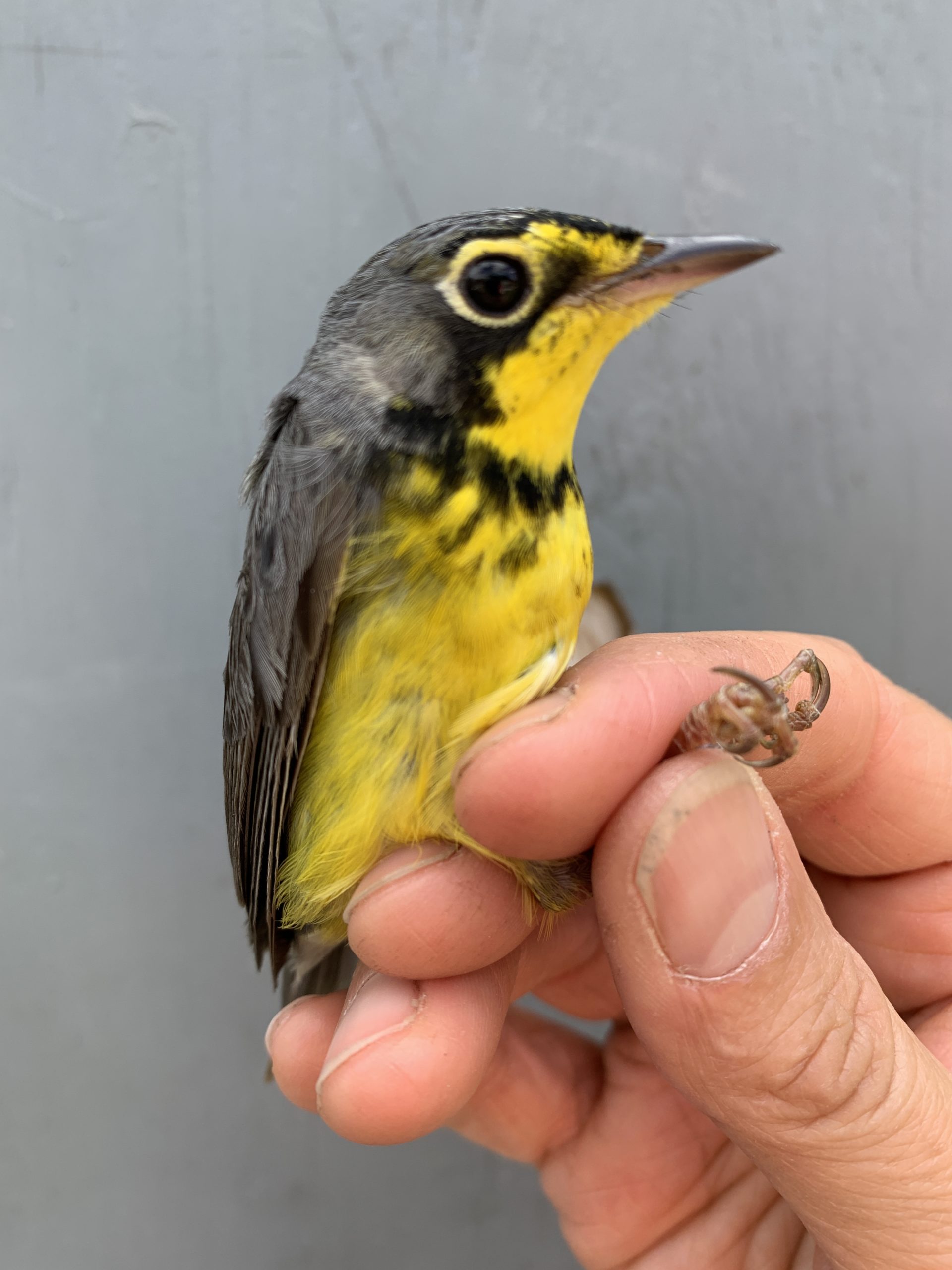
Canada Warbler – I had one in my feeder net in the backyard and another down the road at my other nets.
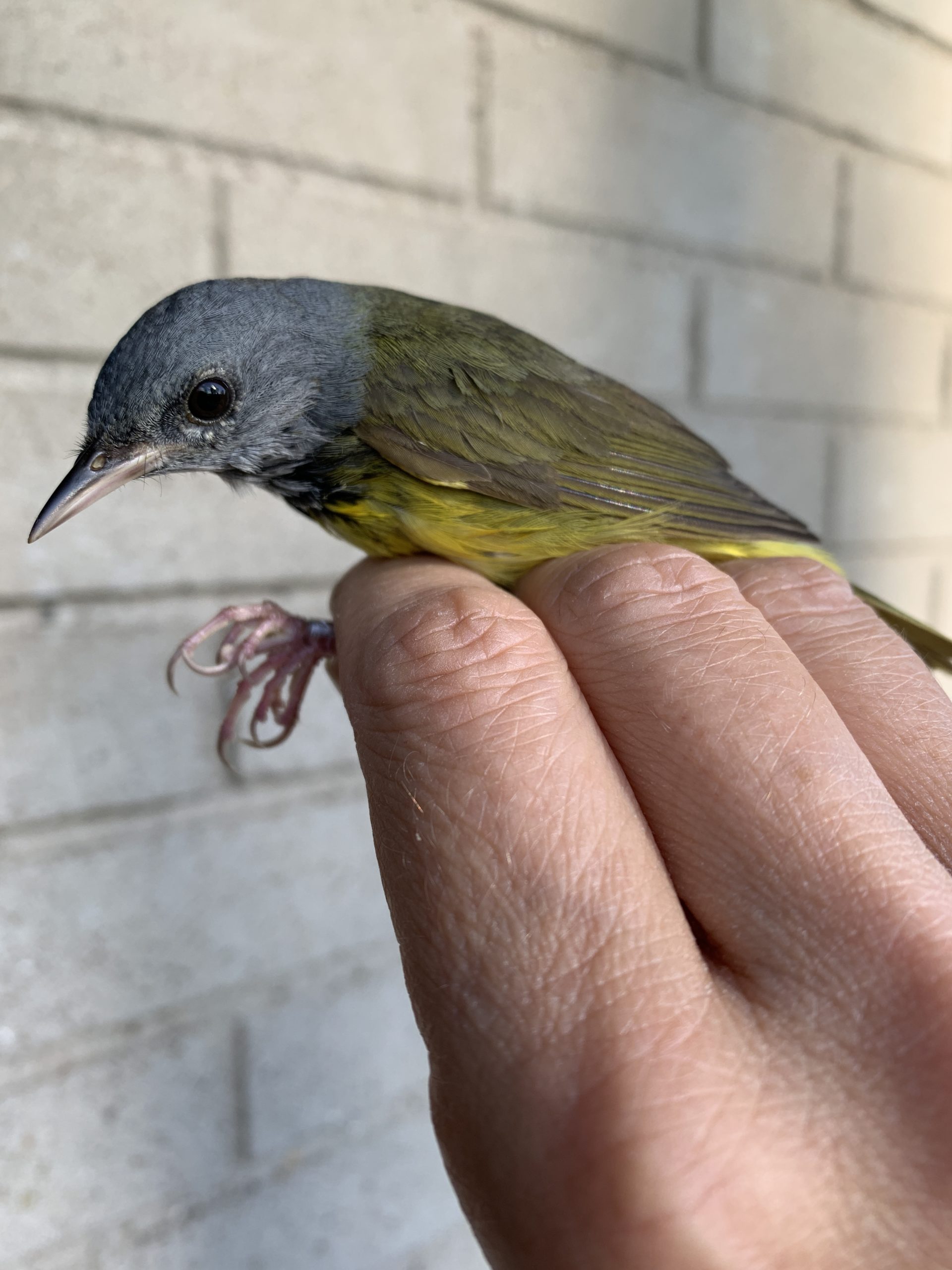
Mourning Warbler – I think this is the first one I’ve ever had in hand! What a surprise to get it in my net, although when I looked up their habitat, they prefer thickets of blackberries and wet woodlands, which is the habitat my net is in. I’ll have to keep an ear out for it singing for the Atlas this summer.
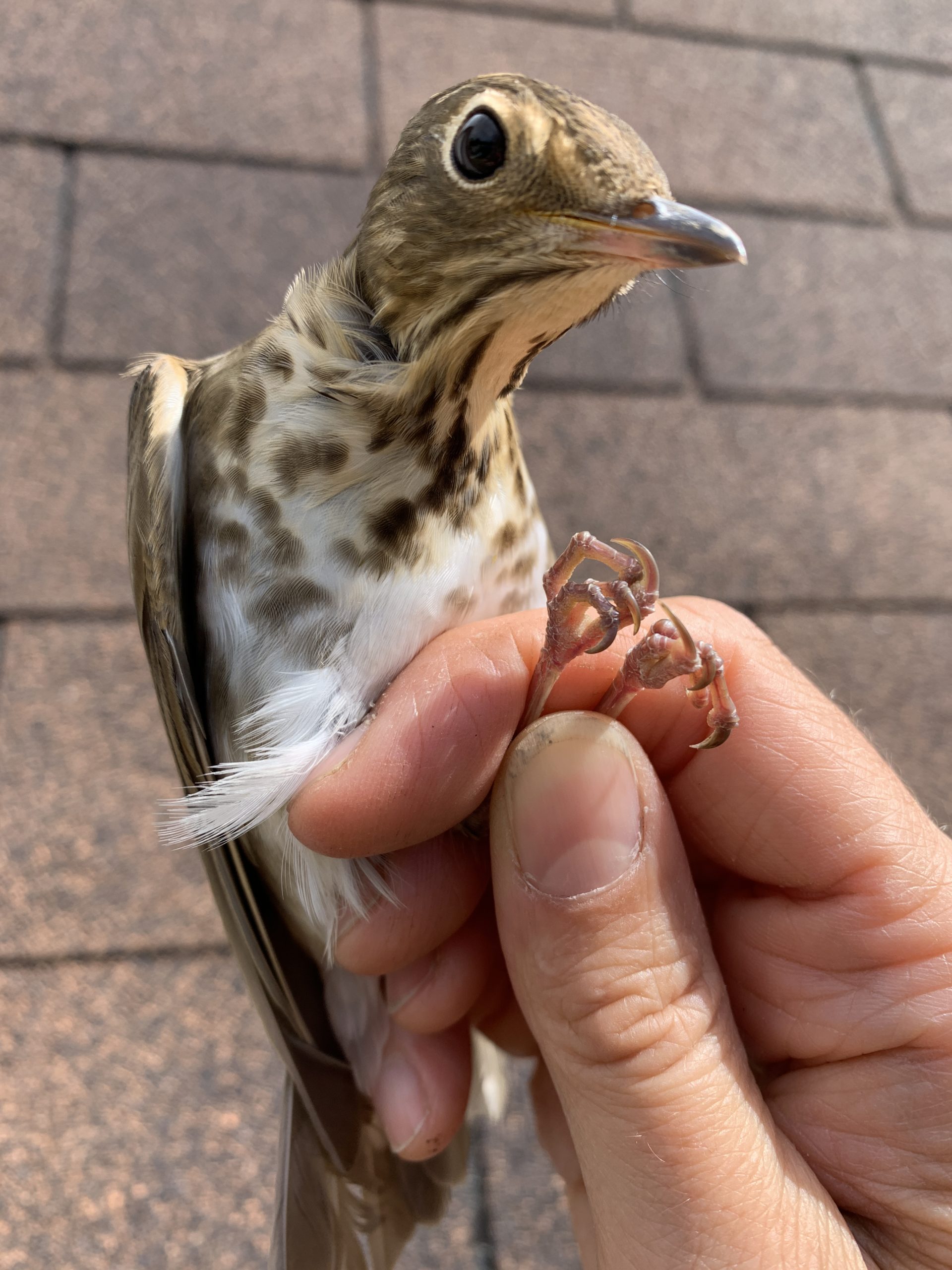
Swainson’s Thrush – Another bird I’ve not had in hand, at least not in recent years and the first thrush, other than robins, I’ve banded this spring.
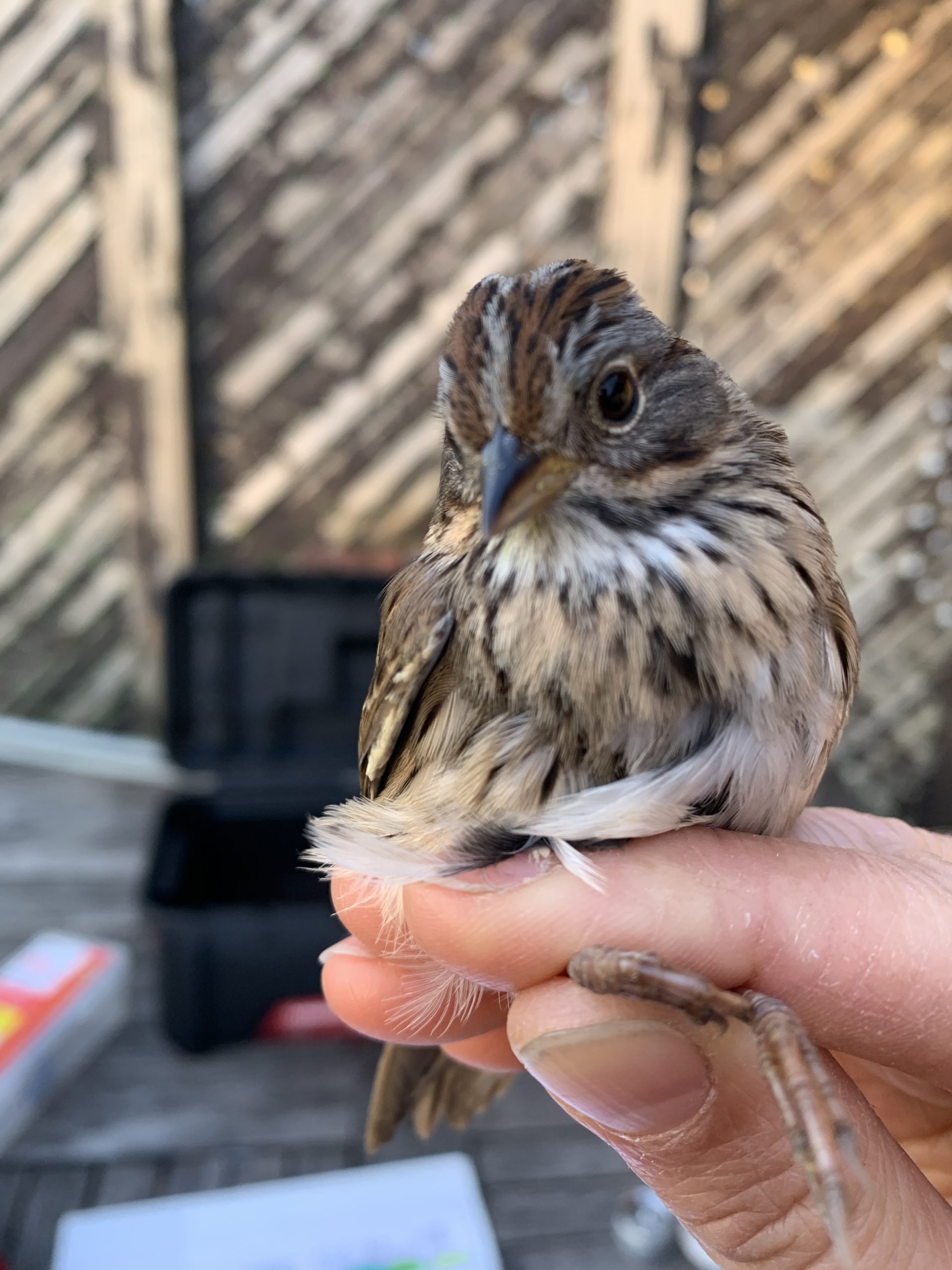
Lincoln’s Sparrow – Dave and I should be keeping track of the variety of sparrows on our road. Too bad the Clay-Coloured didn’t make it down this way…
Faye


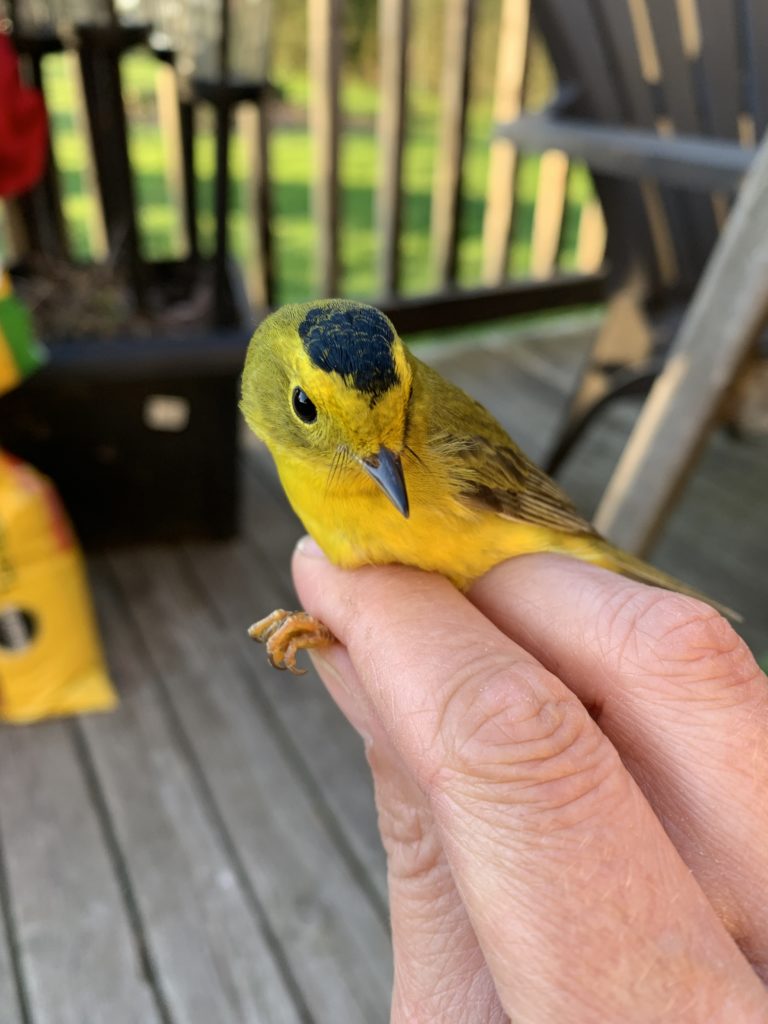
Thanks for.sharing Faye! I may have to pick up that book! Catherine
Hi Faye thank you for the story about the small parcels … this is vital information to spread for the support of landscaping using native species.
I also wanted to say that in Haldimand we have a few remnant areas of old fashion farms with small fields surrounded by hedgerows making a dense network of hedgerow habitat on the landscape. The density of nests in these shrub networks is obviously greater compared to the density of nests in hedgerows that are single features running a long length within open field without other woody habitat around.
Its like the areas of dense shrub network on the landscape are like our cities … much more densely full of dwellers … We (Haldimand Stewardship and local partners) have discussed having a masters student or someone conduct a study comparing bird use in these two landscape level shrub habitat densities.
Thank you again to everyone for all the posts on this blog. Cathy Blott.